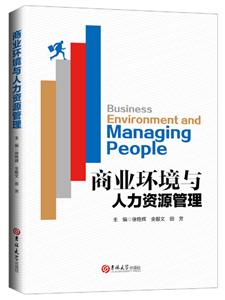有劃線標(biāo)記、光盤(pán)等附件不全詳細(xì)品相說(shuō)明>>
-
>
以利為利:財(cái)政關(guān)系與地方政府行為
-
>
立足飯碗 藏糧于地——基于中國(guó)人均耕地警戒值的耕地保護(hù)視角
-
>
營(yíng)銷(xiāo)管理
-
>
茶葉里的全球貿(mào)易史(精裝)
-
>
近代華商股票市場(chǎng)制度與實(shí)踐(1872—1937)
-
>
麥肯錫圖表工作法
-
>
海龜交易法則
商業(yè)環(huán)境與人力資源管理 版權(quán)信息
- ISBN:9787569249583
- 條形碼:9787569249583 ; 978-7-5692-4958-3
- 裝幀:一般純質(zhì)紙
- 冊(cè)數(shù):暫無(wú)
- 重量:暫無(wú)
- 所屬分類(lèi):>>
商業(yè)環(huán)境與人力資源管理 本書(shū)特色
本書(shū)由中外合作辦學(xué)項(xiàng)目一線教師編寫(xiě),堅(jiān)持以“立足高職、服務(wù)高職,培養(yǎng)國(guó)際商務(wù)人才”為宗旨,具有實(shí)用性強(qiáng)、邏輯性強(qiáng)、簡(jiǎn)明扼要的特點(diǎn)。以商務(wù)環(huán)境、人力資源管理基本理論為出發(fā)點(diǎn),既培養(yǎng)學(xué)生系統(tǒng)的專(zhuān)業(yè)理論知識(shí),又注重培養(yǎng)學(xué)生的實(shí)際分析、解決問(wèn)題的能力,為其他相關(guān)專(zhuān)業(yè)課的學(xué)習(xí)及未來(lái)實(shí)際工作奠定基礎(chǔ)。
商業(yè)環(huán)境與人力資源管理 內(nèi)容簡(jiǎn)介
內(nèi)蒙古商貿(mào)職業(yè)學(xué)院自2007年起分別與英國(guó)桑德蘭城市學(xué)院、英國(guó)南埃塞克斯學(xué)院開(kāi)展聯(lián)合辦學(xué)項(xiàng)目,合作培養(yǎng)具有專(zhuān)業(yè)視角的國(guó)際化商務(wù)人才。本書(shū)根據(jù)中外合作辦學(xué)項(xiàng)目專(zhuān)業(yè)人才培養(yǎng)目標(biāo),以國(guó)際商務(wù)環(huán)境、人才管理的基本理論為出發(fā)點(diǎn),旨在把中外合作辦學(xué)項(xiàng)目學(xué)生培養(yǎng)成為既具有系統(tǒng)的專(zhuān)業(yè)理論知識(shí),又具有實(shí)際工作經(jīng)驗(yàn)與能力、了解相關(guān)商務(wù)環(huán)境、人力資源管理知識(shí)的國(guó)際商務(wù)人才。
商業(yè)環(huán)境與人力資源管理 目錄
Introduction to the Book ……………………………………… 002
Chapter 1 Organizations and Their Objectives ………………… 005
Chapter 2 Businesses Stakeholders …………………………… 028
Chapter 3 Responsibilities of Organizations …………………… 045
Chapter 4 Business Environment Analysis …………………… 072
Chapter 5 Market Forces ……………………………………… 093
Chapter 6 Market Structure and Competitive Forces ………… 105
Chapter 7 The International Business Environment ………… 125
Appendix ……………………………………………………… 141
Part 2 Managing People ……………………………………… 157
Section I Module Guide ……………………………………… 158
Section II Assessment ………………………………………… 161
Section III Managing People ………………………………… 178
Chapter 1 The Role of Human Resources ……………………… 180
Chapter 2 Developing and Implementing Strategic HRM Plans … 207
Chapter 3 Recruitment ………………………………………… 233
Chapter 4 Selection …………………………………………… 263
Chapter 5 Compensation and Benefits ………………………… 296
Chapter 6 Retention and Motivation …………………………… 332
Chapter 7 Training and Development ………………………… 367
Chapter 8 Employee Assessment ……………………………… 406
Chapter 9 Working with Labor Unions ………………………… 438
Bibliography …………………………………………………… 453
商業(yè)環(huán)境與人力資源管理 節(jié)選
Introduction to the Book Description The purpose of the book is to introduce learners to the institutions and influences which constitute the economic and broader environment in which businesses operate and to develop an understanding of how businesses adjust their behaviour to changes in the environment,both nationally and internationally. Learners are encouraged to identify the objectives of organizations and the influence of stakeholders and to investigate the operation of organizations in relation to the local, national,and global environments. It is expected that learners will develop an understanding of the nature and purpose of political and economic institutions, underpinned by a knowledge of how basic economic theory works in different types of economy. Learners will also be expected to develop a basic understanding of economic, social and technological forces and be able to compare China with other countries. Teaching/ Learning Strategies The book will be delivered through a combination of lectures, seminars, small group tutorials as well as guided self-study. A topic will be introduced via a lecture. In the days following the lecture students will be invited to undertake related research which will then be discussed, reinforced, extended and enhanced via group seminars which may be tutor or student-led. The strategy will be underpinned and formatively assessed by small group tutorials. Chapter 1 Organizations and Their Objectives Introduction A great number of organizations with many different types, forms and usually with various objectives can be encountered in our lives. The business organizations we come into contact vary from huge organizations, employing thousands all over the world and with a turnover lager than some nations’ gross national product, to modest business organizations hiring only a few people and operating in a small locality. So what is the purpose of all organizations? Why were they set up, and why some of them cannot continue and some can operate successfully? In this chapter we are going to consider the advantages and disadvantages of different forms of businesses, like sole traders,partnerships, and limited liability companies. We also identify the differences between the public and private sectors, and explain the functions of three levels of economic activities,including primary, secondary and tertiary industries. In this chapter, we will mainly identify and discuss the mission, vision, values and various objectives of an organization. An organization should have its mission—the guiding idea behind the organization’s all activities. Vision is a kind of intention of an organization that is expected to be realized in the future. Values can be a set of principles or ideas that influence the activities of an organization. Objectives of an organization are used to fulfil the mission, which also explain the organization’s mission to a number of different client groups or stakeholders, who all have an interest in the organization’s activities. The objectives of this chapter: (1)The size and types of organizations (2)The nature of the public and private sectors (3)The three levels of economic activities (4) Business objectives 1.1 Categories of Organizations An organization is an arrangement of people, pursuing common goals, achieving results and standards of performance. There are many different types of organizations that are set up to serve a number of different aims and to meet a variety of needs. They come in all forms, shapes and sizes. All businesses try to achieve their goals so that they can be operated successfully. Any business has people and resources to do one of two following things. A. To produce or make items or goods to be sold, like shoe factory, furniture maker, jeans factory, computer maker. B. To provide services to be sold including banks, police, hospitals and insurance. Here are some possible differences between organizations.
- >
龍榆生:詞曲概論/大家小書(shū)
- >
中國(guó)歷史的瞬間
- >
隨園食單
- >
經(jīng)典常談
- >
苦雨齋序跋文-周作人自編集
- >
史學(xué)評(píng)論
- >
煙與鏡
- >
自卑與超越















